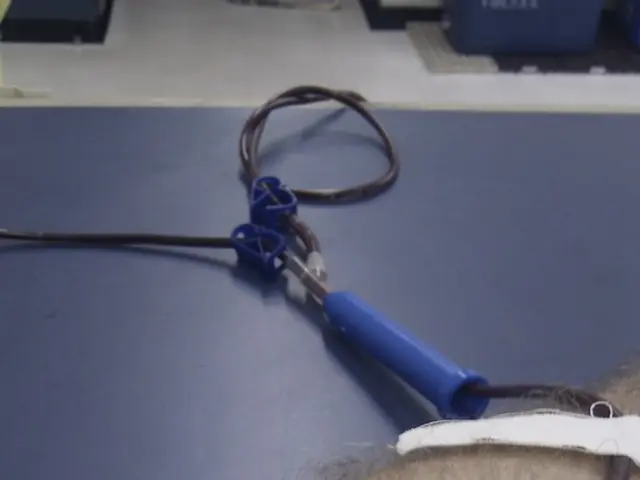Anticipated Recovery Phase for Hip Replacement Surgery: Breakdown of Expected Stages
Recovery Timeline for Hip Replacement Surgery
Hip replacement surgery can bring relief from pain and improve mobility for individuals, yet the recovery process varies from person to person. In most cases, patients can resume light activities within 3 to 6 weeks post-surgery, with a gradual return to normal activities following.
Preparation for the Surgery
To minimize the risk of complications and enhance recovery, patients are advised to prepare their bodies several weeks before undergoing a hip replacement. This involves discussing the surgery with their healthcare team, researching what to expect during and after the procedure, engaging in leg, core, and upper body strengthening exercises, maintaining a moderate weight, quitting smoking, and arranging for help with daily activities following surgery.
Immediate Post-Surgery and Recovery
Patients typically remain in the hospital for 1 to 2 days following surgery, although some may return home on the same day. Pain management often involves the use of opioids, local anesthetics, NSAIDs, and acetaminophen. Staples or sutures may be used to close the incision, which may require at-home wound care. Physical therapists will coach patients on exercises to strengthen the hip and guide them on what activities to avoid.
Returning Home and Longer-Term Recovery
Daily activities may require assistance for several weeks after returning home, or patients may stay in a rehabilitation facility. Pain and discomfort may persist for a few weeks, and patients should continue taking prescribed medication. Regular physical therapy or recommended home exercises can help speed recovery and improve the functioning of the new joint.
Recovery Milestones and Timeframes
By 10 to 14 days after surgery, patients should no longer have stitches, and pain and swelling may begin to decrease. Activity levels at this stage can vary among individuals, with some people able to move about more easily without assistance. Around 6 weeks post-surgery, patients may feel ready to return to work, and after 6 to 8 weeks, they can safely engage in sexual activity.
Physical therapy is typically recommended for at least two months following surgery, and patients should consult their doctor about when it is safe to engage in additional exercises such as swimming and walking.
• follow physical therapy exercises as a physical therapist instructs• try other gentle exercises, such as daily walking• sit in a reclining position• use a cold compress to reduce swelling• take any prescription medications as a doctor instructs• use walking aids, such as crutches, if necessary
Recovery in Older and Younger Individuals
The recovery process in older adults can be more challenging due to preexisting mobility issues and a higher risk of complications from heart and lung disease, clogged arteries, and high blood pressure. Older adults should prioritize fall prevention, as a fall could require additional surgery. In younger individuals, recovery is generally free of complications, though preexisting health conditions may impact the recovery process.
• sitting still for long periods• crossing the legs at the knee• bending the hip more than 90 degrees• bending down to touch the feet or ankles• sitting in low chairs• intense exercise, which may involve jumping or sudden turns• moving or lifting heavy objects
Hip resurfacing surgery involves trimming and capping the femoral head with a metal cover instead of removal. Patients may go home 1 to 4 days after surgery, and some may start putting weight on their leg immediately, though assistive devices like walkers, canes, or crutches may still be necessary for the first few days or weeks. Recovery precautions include bending and movement restrictions, activity limitations, and the use of assistive devices. Full recovery may take up to 3–6 months or more, with some patients seeing improvements up to a year after surgery.
In summary, hip replacement and resurfacing surgeries have high success rates, with patients typically able to walk short distances with assistance soon after surgery. Physical therapy plays a crucial role in strengthening muscles and restoring mobility, and progress vary among individuals. Patients can expect to return to light activities within about 6 weeks, with a full return to normal activities taking several months or more. Proper precautions during recovery decrease the risk of dislocation and ensure proper healing of the surgical site.
- To minimize complications and enhance recovery, patients should engage in leg, core, and upper body strengthening exercises, maintain a moderate weight, quit smoking, and arrange for help with daily activities following surgery.
- Physical therapists will coach patients on exercises to strengthen the hip and guide them on what activities to avoid after surgery.
- Regular physical therapy or recommended home exercises can help speed recovery and improve the functioning of the new joint.
- In older adults, the recovery process can be more challenging due to preexisting mobility issues and a higher risk of complications from chronic diseases like COPD, heart disease, and high blood pressure.
- Hip resurfacing surgery involves predictive benefits, such as the ability to delay a total hip replacement in younger patients, but patients may also experience chronic-kidney-disease and other complications if they have preexisting medical-conditions like Alzheimer's or colitis.
- Science and medical research is continually improving recovery timelines for both hip replacement and resurfacing surgeries, with both surgical options showing promise for future treatments and improvements in health-and-wellness, including reduced reliance on fitness-and-exercise aids like CBD as a potential pain management option.
- In addition to physical therapy exercises, patients should try other gentle exercises, such as daily walking, and use a cold compress to reduce swelling during the recovery process.








